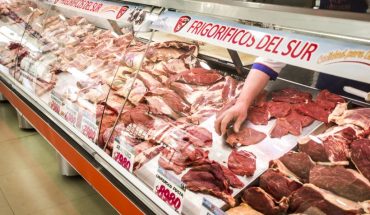Only ten vaccines make up today the select club of formulas approved for emergency use against covid-19 by the World Health Organization (WHO), to which are added a score of formulas authorized locally in several countries.
However, the number of vaccine candidates in clinical development is much higher: 170 in 69 nations, in addition to 194 in preclinical development, according to WHO data.
It has been two years since the global impact of the pandemic forced the design of new vaccines against a then-unknown virus, SARS-CoV-2.
These have decimated the severity of the disease and reduced infections, an important but insufficient achievement to get closer to the goal of ending the pandemic once and for all.
Laboratories today have a greater knowledge of the virus and its mutations, such as the delta and omicron variants, the latter with a genetic composition much further away from the original Wuhan.
So, are we in a position to create the ultimate formula that will end the virus once and for all or normalize living with it?
Scientists are trying and these are two promising advances, according to the WHO and experts, in the laboratories where the next vaccines against covid-19 are being prepared:
1. The intranasal pathway, an impenetrable barrier to the virus?
The most ambitious goal of the scientific community is to achieve sterilizing immunity, that is, not only to protect people against serious illness or death, but to prevent them from becoming infected.
And one of the ways to achieve this may be to administer the vaccine through the nose.
More complex to make, intranasal vaccines will act locally on the respiratory system. GETTY IMAGES
“Now there are many infected but thanks to vaccines few end up in the hospital. So what is missing to stop the contagion? Having a vaccine that prevents infection and that could be provided by those administered intranasally,” molecular biologist Amílcar Pérez Riverol, a researcher at the Research Support Foundation of the State of São Paulo (FAPESP), told BBC Mundo.
While intramuscular vaccines trigger a generalized immune system response, intranasal vaccines act locally in the nose, lungs, and stomach. With this, they impose on the virus a barrier difficult to overcome.
The expert indicates that, when nebulized in the nostrils, they induce a protective response in the pathway of entry of the virus by activating the segregation of immunoglobin A (IgA) antibodies.
In the article “Aroma of a vaccine”, published in the journal Science last August, researchers Frances E. Lund and Troy D. Randall, from the University of Alabama (USA). Intranasal formulas “provide two additional layers of protection: the Vaccine IgA and the memory B and T cells resident in the respiratory mucosa.”
These memory cells remain in the body for a long time after the infection disappears, but they do not forget the viruses or bacteria that fought and, if they return, they recognize and attack them.
These researchers explain that even if a variant of the virus overcomes the first barrier and infection occurs, memory B and T cells respond more quickly by being familiar with the antigen, which “impedes viral replication and reduces spread and transmission.”
Another advantage offered by nebulized vaccines is time, since intramuscular vaccines need between two and three weeks to “update” the immune system to its highest degree of protection.
GETTY IMAGES
There are currently eight intranasal COVID-19 vaccine projects recognized by the WHO.
The most advanced in this area is that of the Indian biotechnology multinational Bharat Biotech, whose product is already in phase 2/3 of human trials, unlike the other projects that are in earlier stages.
Among these is the one led by scientists Akiko Iwasaki and Benjamin Goldman-Israelow, from Yale University (USA). In the U.S., they managed to successfully immunize mice against respiratory viruses such as coronavirus.
“The results in preclinical models are promising. We believe it will work with the variants currently circulating, as well as future variants,” Dr Goldman-Israelow told BBC World.
But not everything is rosy. Experts warn that favorable results in mice do not guarantee the same response in humans. In addition, today only two vaccines administered through the nose, FluMist/Fluenz and Nasovac, both for influenza, are marketed globally, proof of the difficulty of developing this type of medicine.
A complicated challenge that is also assumed by the team led by virologist Luis Enjuanes, from the Higher Center for Scientific Research of Spain (CSIC).
Enjuanes explained to BBC Mundo that its formula shows an important qualitative advantage “in contrast to other mRNA-based vaccines, which do not multiply and self-amplify.”
“Our RNA carries the information to replicate, increasing the number of molecules we have injected and multiplying each one more than a thousand times, which makes the immune response stronger and longer lasting,” he said.
They also work on intranasal vaccines laboratories in Russia (with a variant of Sputnik V), Hong Kong, The United Kingdom (AstraZeneca) or Cuba.
It is unknown, for the moment, when the first of them will begin to be administered to the population. Laboratories avoid announcing approximate dates.
“I don’t see any being approved before the second half of 2022,” says Dr. Pérez Riverol.
2. A “supervaccine” that attacks all coronaviruses
GETTY IMAGES
Pfizer has begun clinical studies for a new vaccine tailored to omicron.
But, if we’ve learned anything in the pandemic, it’s that no matter how much haste we put into creating and distributing a covid-19 vaccine: there may be a new, faster variant that catches us off guard and limits the effects of injections.
In addition, SARS-CoV-2 is the most famous but not the only coronavirus. In recent decades, other dangerous variants have led to significant outbreaks, such as those that cause SARS and MERS.
This could end with a definitive formula that attacks all variants: the so-called pan-coronavirus vaccine.
“We’re not going to chase the next variant.” The chief medical adviser of the White House, Anthony Fauci, thus positioned himself on January 12 in favor of a future vaccine that allows us to prevent and combat not only the covid-19 virus but also other similar ones that could arise in the coming years.
The chief medical adviser of the White House, Anthony Fauci, is betting on the creation of pan-coronavirus vaccines. GETTY IMAGES
“The importance of developing a pan-coronavirus vaccine, that is, one that is effective against all variants of SARS-CoV-2 and ultimately against all coronaviruses, has become even more apparent,” Fauci told a U.S. Senate committee.
Manufacturing these vaccines, explains Dr. Pérez-Riverol, is very complex, and one of the ways that are investigated is to adhere the S proteins of the virus to nanoparticles.
S proteins are key for the virus to bind to the human cell, so part of the current vaccines consist of deploying innocuous modifications of these on the surface of the cells to induce the immune response.
“If you use a nanoparticle and combine it with S proteins from different variants of SARS-Cov-2 with wide antigenic diversity, those who receive it will be immunized against a wide variety of variants of the coronavirus. Therefore, the immune system will be more prepared to respond to those that can be generated and have been generated,” he explains.
Highlights in this area is the project of the Walter Reed Army Research Institute (WRAIR), in the US, which is working on a vaccine candidate called SpFN based on ferritin nanoparticles, a protein that stores and transports iron and that, attached to human cells, can prevent the replication of the virus.
This compound passed phase 1 of human trials in December 2021 with positive results against several variants, including omicron, and in the coming months its efficacy and safety will be tested in phases 2 and 3, announced Dr. Kayvon Modjarrad, director of infectious diseases at WRAIR.
SpFN uses a 24-sided soccer ball-shaped protein, which allows scientists to bind the spicules of various coronavirus strains on different sides of the protein, Modjarrad said in an interview with U.S. specialized portal Defense One.
Also noteworthy in this line is the Pan-Corona initiative, the result of a collaboration between China and Cuba.
Based in the city of Yongzhou (in the central Chinese province of Hunan) and led by Cuban scientists, the project seeks to create a vaccine that induces the antibody response in the human body from the combination of already known virus fragments.
GETTY IMAGES
Scientists working on these projects have also not dared to announce estimated dates, so it is unknown when the first “supervacu” might be available.nas” that protect us against current and future variants.
The WHO, in any case, hopes that the two aforementioned advances will be followed by new and important advances in the field of new vaccines against covid.
“Just because there are more vaccines on the market doesn’t mean we should stop making progress in research and development. We must continue to look for better options,” WHO chief scientist Soumya Swaminathan said in a recent interview with Reuters.





